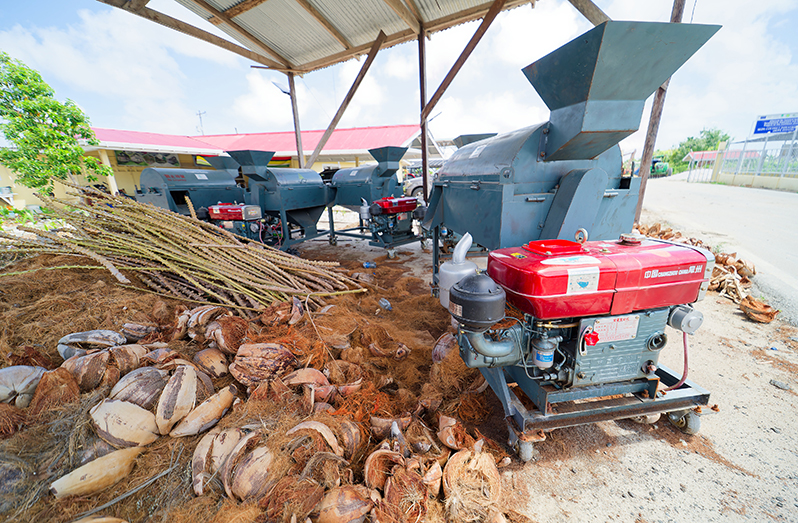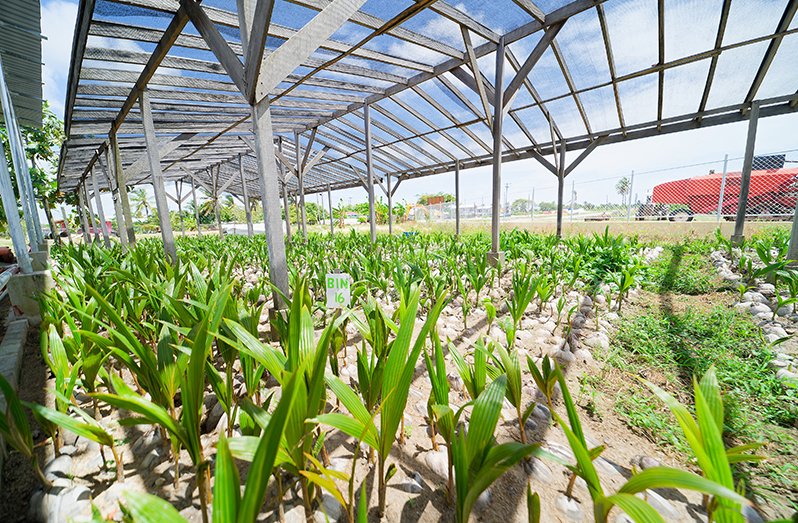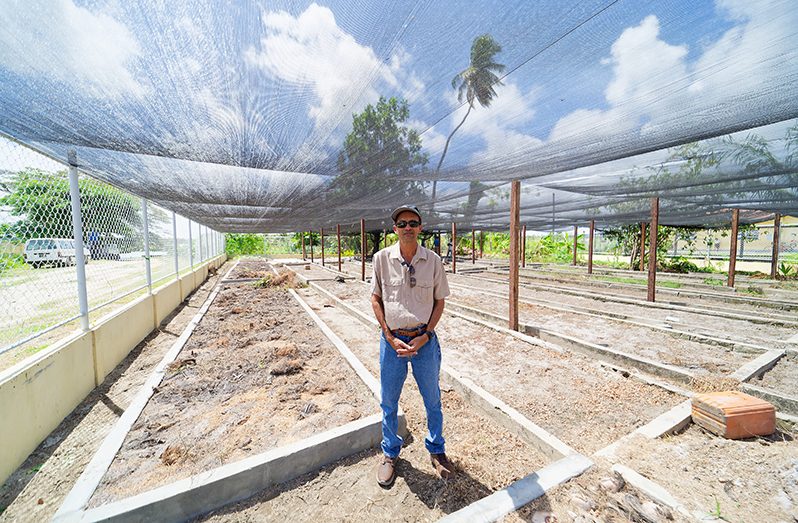At the forefront of coconut production in the Caribbean
COCONUTE are everywhere in Guyana, from the sweet water Guyanese relish to the husk used for several purposes. These resilient crops are a part of a larger industry. Tons of coconuts are exported and traded daily across the world. In Guyana, however, this massive industry is rarely explored. From the coconut man in the heart of Georgetown to the large scale operations of international trade, the coconut industry is growing.
The industry is also fighting a great foe: Climate Change. Like all agriculture, coconuts depend on the weather as much as we depend on the coconuts. With the extended dry season, major players in the industry are making big changes. Delving deep into the captivating world of coconut production, the Pepperpot Magazine ventured to the heart of coconut country in Guyana, the village of Hope.
History and community ties
Hope Coconut Industries is among the oldest and longest surviving estates Guyana has to offer. The estate began many decades ago in colonial times. The land Hope Coconut Industries lays on today was once an extensive sugar estate, home to many indentured servants. The estate passed through many hands before it was given to the government. Today, it is the largest coconut producer in Guyana and among the largest in the Caribbean. General manager Ricky Roopchand spoke on behalf of the Coconut estate. Hope Coconut Industries is intertwined with the heritage and history of the community.
There may not be a village with an agricultural past as vibrant as Hope’s. The community and wider region have strived in agriculture for many years. Beginning with the first set of villagers who sought out farming as a way of life to the massive industrialised farming we see today. According to Ricky, Hope Coconut Industries stands out among its counterparts and is one of the largest coconut producers in the Caribbean. They have amassed enough influence and resources to offer help to other Caribbean countries.
As Ricky stated, “We are the leading producers of coconut in the country, and that is our main income source. These nurseries have the capacity to produce 2600 seedlings per annum. Not only are we the leading coconut producer in Guyana but also among the Caribbean.” Although Hope Coconut Industries is still very much on top of its field, coconut production across the community is not what it used to be. As Ricky explained, “Hope was once known as the leading producer of coconuts in the country, but that is not the case now. People have cleared their lands over the years, and coconut was not in demand so we have rice cultivating now, cattle and cash crops.”

Climate change and challenges
Climate change can be felt as much as it can be seen. Hope and the resulting coconut estate have long places of agriculture. For many years, a variety of crops have taken root in the community. Beginning with sugar and evolving into coconut production and rice farming, which are still a big part of Hope today. Countless agricultural endeavours have taken place in Hope, and the majority have been wildly successful. In recent times, however, farmers and agriculturists alike have noticed a drastic shift in the weather. As much as farmers will water coconut beds and let water into rice fields, the unpredictable ferocity of the so-called ‘El Niño’ seems to be causing more harm than good.
Walking through one of the many beds of coconut, Ricky reflects on the damaging effects of the sun. Many of the coconut beds at Hope Industries are suffering under the sun. Ricky explained that, “We have farmers than water at least twice a day, and still the beds continue to dry out. This has caused us many loses.” The intensity of the sun and the unpredictability of the weather are things that farmers everywhere are contending with. But Hope Coconut Industries has a plan they believe can solve their problems, and the results seem promising.
Although not much can be done to dissolve the sun’s heat completely, there are a few solutions the estate is looking into. Shade houses are the next step. Although costly, compared to unshaded beds, shaded houses are 80 percent more productive. As a trial run, they have shaded a few of their beds while others have stayed out in the sun, and the shaded beds are proving to be far more productive.

Finding solutions and creating Hope
One may not think that international relations is a big part of coconut production, but it is a rather significant aspect. Guyana’s coconuts have travelled far and wide and have become known for their quality and natural taste. Hope Coconut Industries has also under taken a new venture.
They have begun to implement new species of coconuts. Hope Coconut Industries has invested in coconuts from all around the world, with the most recent coming form Brazil. This is far way from where they began all those years ago. As Ricky stated, “At the time when we began the idea we only had 1,500 seedlings and that has increased. And we could have only constructed five bins.” Ricky is hopeful about the future of coconut production in Guyana. As she shared, “The demand for coconut is very high. It is gender-inclusive, anybody could plant a coconut. The long-term benefits are something you do not see immediately.”



.jpg)








